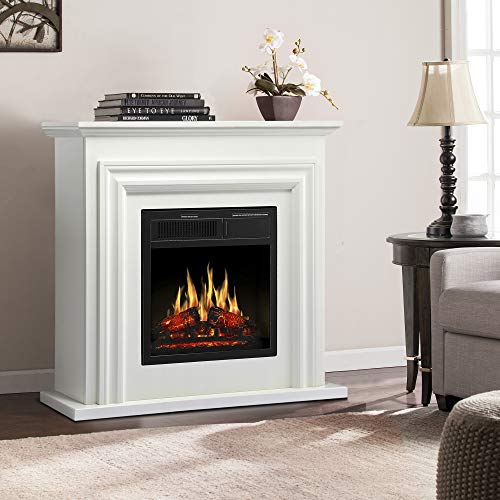How Much Can Fireplaces And Stoves Experts Earn?
The Comprehensive Guide to Fireplaces and Stoves
Fireplaces and stoves have been essential to human civilization for centuries, acting as a source of heat, light, and comfort. These home appliances are available in numerous forms and have developed for many years, catering to varied preferences and technological developments. This post provides an informative summary of fireplaces and stoves, highlighting their types, advantages, maintenance pointers, and installation considerations.
Kinds of Fireplaces
The world of fireplaces is rich and varied. Here are the most typical types:
Wood-Burning Fireplaces:
- Traditional and lovely.
- Requires seasoned wood and routine maintenance.
- Produces a pleasant fragrance and crackling noise.
Gas Fireplaces:
- Offer benefit and ease of usage.
- Available in vented and vent-free options.
- More efficient and cleaner than wood-burning options.
Electric Fireplaces:
- Provide ambiance without the requirement for a chimney.
- Easy to use with remote control options.
- Can be utilized as a supplemental heat source.
Pellet Stoves:
- Use compressed wood pellets as fuel.
- Extremely efficient and eco-friendly.
- Frequently geared up with thermostats for temperature level control.
Ethanol Fireplaces:
- Utilize bioethanol fuel, making them portable.
- Do not require venting, which enables versatile placement.
- Produce a reasonable flame with minimal smoke.
Outdoor Fireplaces:
- Designed for outdoor settings; can be wood or gas-burning.
- Great for entertaining and enhancing backyard looks.
- Typically constructed from stone, brick, or metal.
Benefits of Fireplaces and Stoves
Including a fireplace or stove into a home uses various advantages:
- Aesthetic Appeal: Fireplaces function as striking focal points in any room, adding warmth and character to home design.
- Increased Property Value: Homes with functional fireplaces tend to have higher resale worths.
- Energy Efficiency: Modern fireplaces and stoves are created to be more energy-efficient, which can result in reduced heating expenses.
- Backup Heating Source: In case of power failures, wood-burning and gas fireplaces can act as important heating sources.
- Versatile Heating Solutions: Different types of fireplaces cater to various heating needs and way of lives, from cozy atmosphere to efficient heating.
| Kind of Fireplace/Stove | Fuel Source | Efficiency Rating | Upkeep Level |
|---|
| Wood-Burning | Wood | Moderate | High |
| Gas | Natural gas/LP | High | Low |
| Electric | Electrical energy | High | Extremely Low |
| Pellet | Wood pellets | High | Moderate |
| Ethanol | Bioethanol | Moderate | Low |
| buy Outdoor fireplace online | Wood or gas | Moderate | Varies |
Upkeep Tips
Appropriate maintenance extends the life of fireplaces and stoves, ensuring safety and efficiency. Here are some necessary suggestions:
Regular Cleaning:
- Wood-burning fireplaces need to be cleaned up after a complete season of use to get rid of soot and creosote.
- Gas fireplaces require routine examination of the burner and vents.
Routine Inspections:
- Have chimney sweeps carry out annual inspections to recognize obstructions or structural damage.
- Examine the seals and gaskets on gas units to prevent leaks.
Fire Safety:

- Install smoke and carbon monoxide gas detectors in homes with fireplaces or stoves.
- Keep a fire extinguisher near the fireplace or range for emergency situations.
Use Quality Fuel:
- For wood-burning systems, always use seasoned wood; avoid treated or painted wood.
- When using pellets, guarantee they are kept appropriately to avoid wetness absorption.
Handle Airflow:
- Keep vents and ducts clear to promote efficient ventilation and airflow.
- Think about utilizing glass doors or screens to lessen debris and ash in the home.
Installation Considerations
Installing a fireplace or stove needs careful consideration of a number of elements:
Location:
- Choose a place that permits for correct clearance and ventilation.
- Consider the design of your home and the benefit of natural heat circulation.
Structure Codes and Permits:
- Check local regulations regarding installations and necessary authorizations.
- Engage a professional to ensure compliance with safety requirements.
Fuel Type:
- Evaluate your fuel alternatives based upon accessibility, expense, and ecological effect.
- If going with gas, ensure existing gas lines can accommodate the new home appliance.
Ventilation:
- Proper venting is vital for safety and efficiency, specifically for gas and wood-burning units.
- Seek advice from an expert to determine the best venting solution.
Aesthetic Consideration:
- Select a style that complements your home's interior.
- Think about mantels, surround materials, and colors that match your decor.
Frequently asked questions
What is the very best kind of fireplace for heating?
Gas fireplaces are generally more efficient for heating, while wood-burning fireplaces offer more ambient warmth.
How typically should I clean my fireplace?
Wood-burning fireplaces must be cleaned up a minimum of once a year, while gas fireplaces need less regular attention depending upon usage.
Can I set up a fireplace myself?
While some property owners might attempt DIY setup, it is recommended to employ an expert to ensure safety and compliance with building codes.
Are electric fireplaces efficient?
Yes, electric fireplaces are very efficient and can function as reliable supplemental heating sources, particularly in smaller sized spaces.
What is the lifespan of a fireplace?
The life-span of a fireplace differs depending on the material, type, and upkeep; nevertheless, a properly maintained wood-burning fireplace can last over 30 years.
Fireplaces and stoves remain timeless functions in homes, offering warmth and atmosphere. Comprehending the various types, benefits, and upkeep requirements can help property owners make informed choices about setup and care. With mindful planning and routine upkeep, these appliances can enhance both the convenience and value of a home for years to come.


